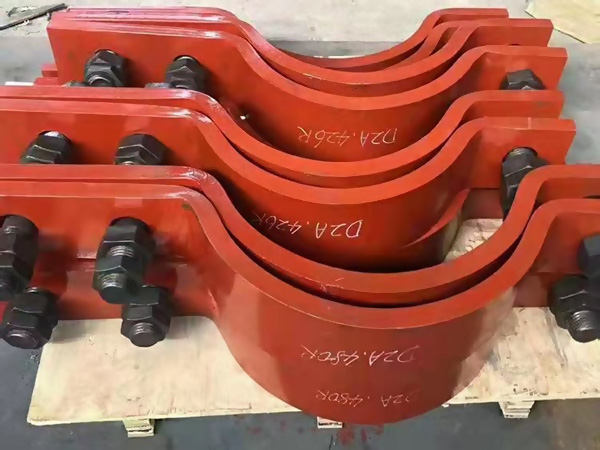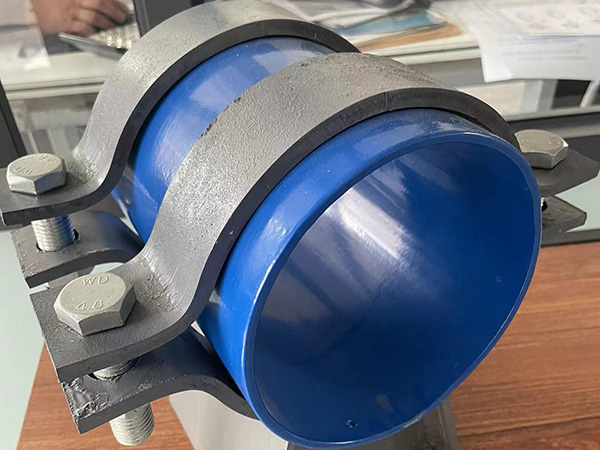How to Avoid Common Pipe Clamp Installation Errors
Author:Mingde Time:2025-11-11 15:37:36 Click:145
Why Pipe Clamp Installation Accuracy Matters
Pipe clamps may seem like small accessories, but they perform a crucial role in every piping system. They keep pipes stable, reduce vibration, and prevent damage caused by motion or pressure. However, improper installation can lead to noise, leaks, or even premature system failure.
As an experienced pipe clamp manufacturer and China supplier providing bulk production, we’ve seen how simple oversights during installation can result in costly repairs. Let’s explore the most common mistakes and how to prevent them.
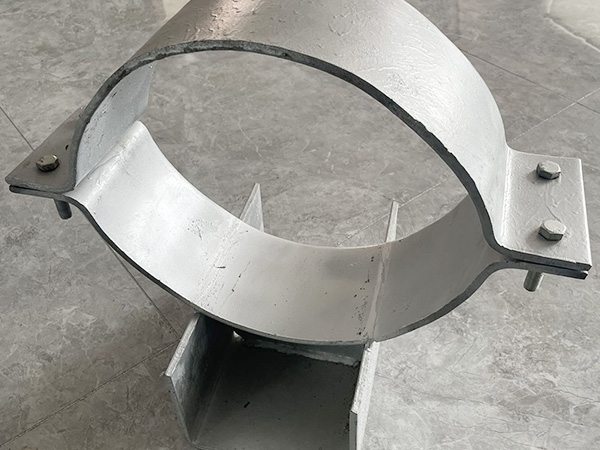

1. Using Incorrect Clamp Sizes
Selecting the wrong clamp size is one of the biggest sources of installation failure. If the clamp is too tight, it can crush or distort the pipe; if too loose, the pipe shifts and vibrates.
Always match the clamp’s internal diameter precisely with the pipe’s outer diameter. Keep in mind that pipes expand slightly when hot and contract when cool. For flexible or multi-material systems, adjustable or cushioned clamps are ideal.
Tip: Trusted pipe clamp manufacturers can supply accurate dimension charts to guide your selection and ensure precise fitting.
2. Overlooking Material and Environment Compatibility
Not all pipe clamps suit every environment. The wrong material can lead to corrosion, wear, or electrochemical reactions.
For example:
·Stainless steel clamps resist moisture and chemicals, ideal for outdoor or marine settings.
·Galvanized steel clamps are good for indoor or moderate environments.
·Rubber-lined or plastic clamps reduce vibration in HVAC or residential systems.
Choosing materials based on the working environment will extend both pipe and clamp lifespan. Partnering with a China manufacturer offering diverse material options and bulk supply ensures flexibility for different project requirements.
3. Improper Tightening Pressure
A common but often unnoticed mistake is applying incorrect torque.
·Over-tightening can flatten or deform pipes, especially PVC or aluminum.
·Under-tightening allows movement, creating friction and potential leaks.
Always refer to the recommended torque specifications from your clamp provider. A torque wrench helps achieve consistent pressure across all clamps. Correct tightening ensures secure but flexible support, reducing stress and fatigue.
4. Poor Clamp Spacing and Alignment
Even the best clamp won’t perform well if installed at the wrong intervals. If clamps are too far apart, pipes sag or bend under weight. If too close, thermal expansion is restricted.
Spacing guidelines:
·For metal pipes: one clamp every 1.5–3 meters.
·For plastic pipes: every 1–2 meters due to lower rigidity.
Misalignment can also create tension at joints or fittings. Always check that the pipe runs straight and that all clamps are aligned on the same axis.
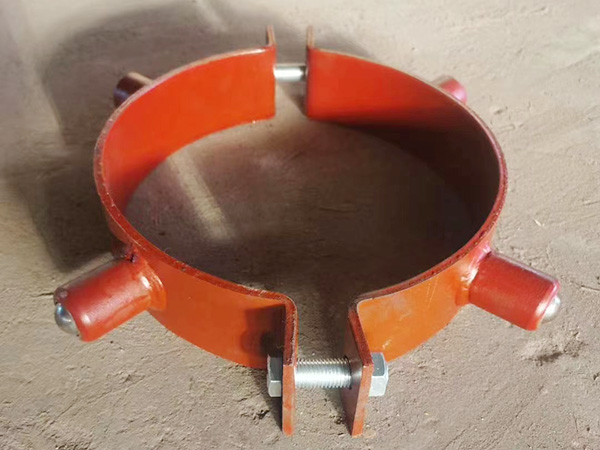
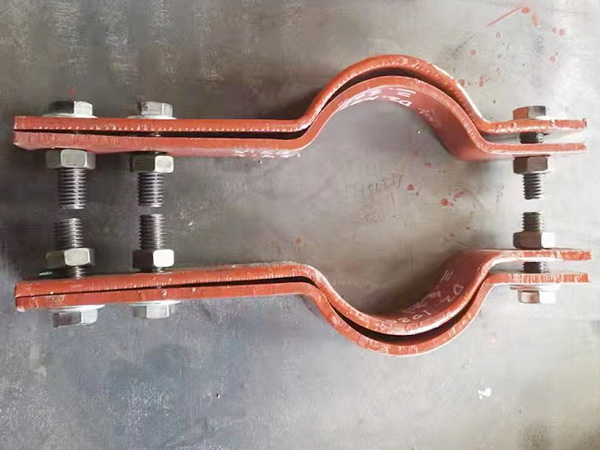
5. Ignoring Thermal Expansion Needs
Pipes naturally expand and contract with temperature changes. If both ends are locked firmly, the resulting stress can cause cracking, bending, or clamp loosening.
To prevent this:
·Incorporate expansion loops or joints.
·Use sliding or cushioned clamps that allow controlled movement.
·Secure one end tightly while letting the other move slightly.
Proper thermal allowance maintains system flexibility and prevents long-term fatigue.
6. Using Inappropriate Mounting Hardware
A pipe clamp’s reliability depends not just on the clamp but also on its fasteners and supports. Using low-grade screws, weak anchors, or mismatched materials can compromise the entire system.
For example, pairing stainless clamps with carbon-steel bolts may cause galvanic corrosion. Always use hardware of matching quality and ensure it suits the installation surface — be it concrete, steel beams, or wooden structures.
A professional pipe clamp manufacturer typically offers complete installation kits to maintain compatibility and load integrity.
7. Neglecting Vibration and Noise Reduction
In systems involving pumps, air compressors, or HVAC units, vibration is unavoidable. If not properly managed, it can cause metal fatigue, joint loosening, and excessive noise.
Using rubber-lined or cushioned clamps absorbs vibration energy and minimizes sound transmission. In multi-floor buildings, this also prevents vibration from spreading to walls or ceilings.
Investing in the right vibration-damping clamps can greatly improve long-term system performance and comfort.
8. Failing to Perform Regular Inspection and Maintenance
Even perfectly installed systems require ongoing care. Over time, heat, moisture, and vibration can loosen fittings or damage clamp linings.
Routine inspection should include checking for:
·Corroded bolts or brackets
·Loose fittings or sagging pipes
·Hardened or cracked rubber liners
Replacing worn parts early prevents more serious structural issues later. Maintenance not only protects your investment but also ensures consistent operation.
Conclusion: Reliable Pipe Support Starts with Expert Installation
The reliability of any piping system depends as much on installation quality as it does on material choice. Avoiding these common mistakes ensures safer operation, lower maintenance costs, and extended service life.
Partnering with an experienced pipe clamp manufacturer — especially one offering China supply and large-scale production capability — gives you access to technical support, customization, and consistent quality across all projects.
From residential plumbing to industrial pipelines, attention to detail in clamp selection and installation is the foundation of a dependable, efficient system.
References
GB/T 7714:Ding H, Ji J C. Vibration control of fluid-conveying pipes: a state-of-the-art review[J]. Applied Mathematics and Mechanics, 2023, 44(9): 1423-1456.
MLA:Ding, Hu, and J. C. Ji. "Vibration control of fluid-conveying pipes: a state-of-the-art review." Applied Mathematics and Mechanics 44.9 (2023): 1423-1456.
APA:Ding, H., & Ji, J. C. (2023). Vibration control of fluid-conveying pipes: a state-of-the-art review. Applied Mathematics and Mechanics, 44(9), 1423-1456.
 Hot Products
Hot Products
 Contact Us
Contact Us
Contact:
Mobile:+86 +86 19133378808
Website:mingdepipe.com
Address:


